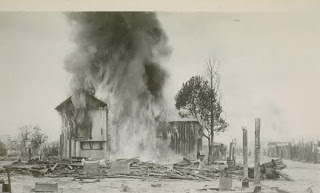

Phineas Banning's residence on Fort Hill. Please see the Ordering & Use page at for additional information.ĭescription View of Los Angeles, "Sonora Town" in 1871. Images available for reproduction and use. You may walk in the middle of a “street” and touch two rows of houses facing each other, or follow a winding path between habitations, tripping over tubs and clothespoles and outdoor fire-places, over dogs and cats and children at play and the tinier tots just creeping about.Title Sonora Town in 1871 Alternative Title Security Pacific National Bank Photo CollectionĬollection Los Angeles Public Library Photo Collection Now the adobe in front has become a tenement for several families, and the courtyard has been honey-combed with shacks, and tents, and non-descript barn-tenements of one and two rooms (or perhaps two families may occupy one room), until one can think of nothing but the squalor of a Chinese city. Once these places were courtyards of the adobes in front, and the “Californians,” as the original Spanish settlers have always called themselves, had plenty of room for gardening and back-yard work, and for the play of big families of children. Swarming, tumble-down habitations of every variety are these nests of humanity, the courts of Sonoratown. Housing Courts of Sonoratown, Illustration from Charities and the Commons, December 5, 1905 Robinson, founder of Boston Dry Goods, which would become Robinson’s Department Store. The city was dense grand houses sprouted in close proximity to the barrio of Sonora Town one block south of the Alvarado family at 503 North Broadway was the house of Harry Chandler, who would become publisher of the Los Angeles Times (the 1900 Census give his occupation as “Business Mgr, Newspaper”), and not far above them they could see atop a hill the mansion of J. José María and Jesús lived at the southern edge of this first barrio.

The Americans called this section of the city “Sonora Town,” presumably because so many of its residents were miners from Sonora who had arrived in the first Gold Rush of 1842. They settled at 414 Bellevue Avenue at North Broadway in the old city center near the Plaza Church. When José María and Jesús arrived in Los Angeles in 1899, they found a city that had undergone dramatic changes in just 50 years under American control the population was already 102,479. The growing population, which the last Mexican census in 1844 showed to be 3,041 from San Fernando to San Juan Capistrano, was wary of the influx of Americans. Thus began a trickle of Americans into California which would become a flood with the Gold Rush of 1849.Īn aborted American invasion of Monterey in 1842 demonstrated that the United States coveted California and would obtain it by any means. citizens to arrive in California by land came in 1826, a group of trappers led by Jedediah Smith who stopped at Mission San Gabriel. By 1830, the population of the Los Angeles area was 1,180 770 people lived in Los Angeles, 230 on surrounding ranchos and 160 at two missions, San Fernando and San Gabriel. The news took a year to reach Los Angeles. In 1821 Mexico became independent from Spain and was known as the Empire of Mexico. There the residents built adobe houses and waterproofed the roofs with tar brought from Rancho La Brea, today’s La Brea Tar Pits near the Los Angeles County Art Museum in Miracle Mile. Here the city was first founded, the main area of the town was around the Plaza and the Plaza Church of Our Lady of the Angels. Market at Ord and Broadway (Sonoratown), Los Angeles, 1890


 0 kommentar(er)
0 kommentar(er)
